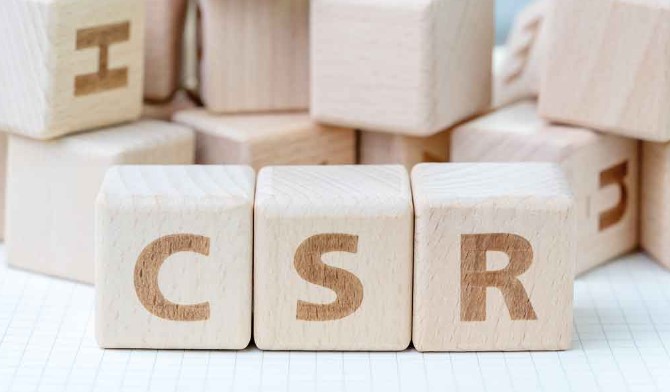
Low Investment due to Global economic conditions
- फ़रवरी 13, 2023
- 0
One of the big policy challenges in India is to strengthen economic revival. A lot in this context depends on investment revival, which has remained tepid for quite some time. The government on its part has been pushing up public investment to crowd in private investment but not with much success. While some of the enabling factors-such as bank and corporate balance sheets-have improved, investment revival may still take some time.
Notably India is not an exception in this regard. Much of the developing world was struggling with lower investment growth even before the pandemic.
Growth in real investment plays a critical role in sustaining longer-term economic growth by boosting productivity and increasing incomes. Lower investment means lower technological progress in developing economics, which will affect potential growth.
The pandemic affected economic activity across the world and had a significant impact on investment demand. About 70 per cent of emerging-market and developing economics are estimated to have suffered an investment contraction in 2020. Revival after the pandemic has been gauged to be much slower than in the initial years after the global financial crisis.
Investment depends on overall economic activity. A slowing global economy and possible recession in large parts of the developed world would only postpone the possibility of revival. A decline in output growth by 1 percentage point in the US or euro area is estimated to reduce aggregate investment growth in developing economies by over 2 percentage points.
The given global economic conditions would affect the prospects of investment revival in India, despite some of the domestic factors becoming favorable. Global uncertainty and weaker output growth would not encourage Indian firms to start investing aggressively even though capacity utilization has improved.
वैश्चिक आर्थिक परिस्थितियों से
निवेश में कमी
भारत में बड़ी नीतिगत चुनौतियों में से एक है आर्थिक गतिविधियों में तेजी लाना और उनमें सुधार की गति बढ़ाना। हालांकि इस संदर्भ में काफी कुछ निवेश की स्थिति में सुधार पर निर्भर करता हैं, जिसमें कुछ समय से सुस्ती छाई हुई है। इसके लिए सरकार सार्वजनिक निवेश को बढ़ावा देती रही है ताकि निजी निवेश मिले, लेकिन इसमें ज्यादा सफलता नहीं मिली है। हालांकि इससे जुड़ें कारक जैसे बैंक और काॅरपोरेट बैलेंस शीट में सुधार दिख रहा है मगर निवेश में सुधार दिखने में अभी कुछ समय लग सकता है।
अहम बात यह है कि भारत इस संदर्भ में अपवाद नहीं है। कोविड-19 महामारी आने से पहले ही विकासशील दुनिया के अधिकतर देश निवेश में कम वृद्धि की दिक्कतों से जूझ रहे थे।
वास्तविक निवेश में वृद्धि वास्तव में उत्पादकता बढ़ाने और आमदनी में वृद्धि के माध्यम से दीर्घकालिन एवं टिकाऊ आर्थिक वृद्धि बनाए रखने में महत्वपूर्ण भूमिका निभाती है। कम निवेश का अर्थ विकासशील अर्थव्यवस्थाओं में प्रौद्योगिकी के मोर्चे पर कम प्रगति होना है, जिससे संभावित वृद्धि भी प्रभावित होगी।
कोविड-19 महामारी ने दुनिया भर की आर्थिक गतिविधियां प्रभावित की हैं और निवेश की मांग पर बड़ा प्रभाव पड़ा। अनुमान है कि लगभग 70 प्रतिशत उभरते बाजारों और विकासशील अर्थव्यवस्थाओं को 2020 में निवेश में कमी से जूझना पड़ा हैं। वैश्विक वित्तीय संकट के बाद के शुरूआती वर्षों की तुलना में महामारी के बाद सुधार बहुत धीमा रहा है।
निवेश समग्र आर्थिक गतिविधियों पर निर्भर करता है। वैश्विक अर्थव्यवस्था की धीमी रफ्तार और विकसित दुनिया के बड़े हिस्सों में संभावित मंदी से सुधार की संभावना आगे के लिए टल जाएगी। अमेरिका या यूरो क्षेत्र की उत्पादन वृद्धि में 1 प्रतिशत गिरावट से विकासशील अर्थव्यवस्थाओं में कुल निवेश वृद्धि 2 प्रतिशत तक घट सकती है।
कुछ घरेलू कारकों के अनुकूल होने के बावजूद भारत में निवेश की रफ्तार बढ़ने की संभावनाओं पर वैश्विक आर्थिक परिस्थितियों का प्रभाव पड़ेगा। वैश्विक स्तर पर बनी अनिश्चितता की स्थिति और उत्पादन वृद्धि में कमी से भारतीय कंपनियां आक्रामक तरीके से निवेश शुरू करने के लिए प्रोत्साहित नहीं होंगी भले ही क्षमता की उपयोगिता बेहतर हो जाए।
































































